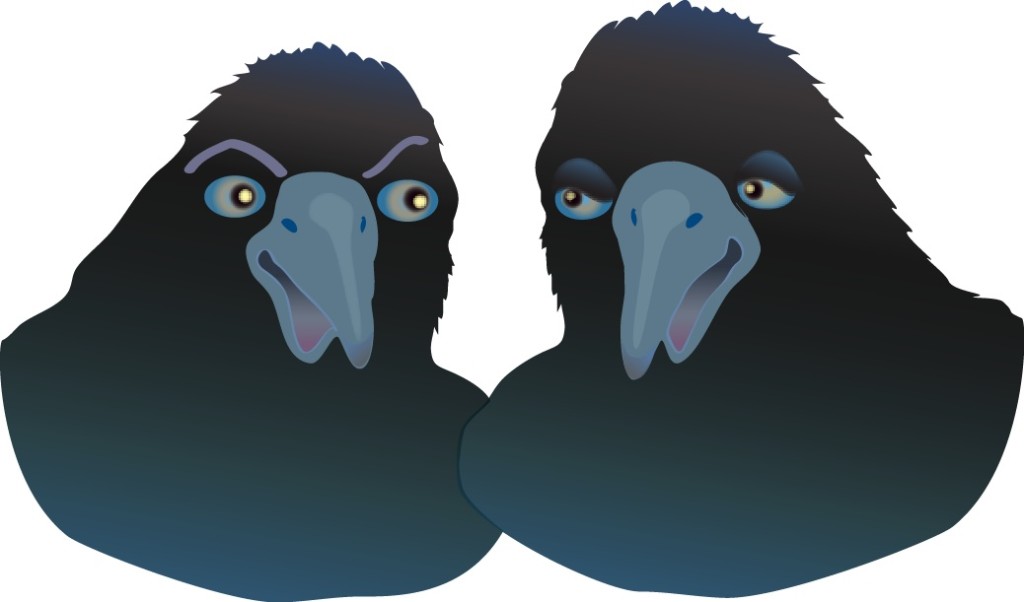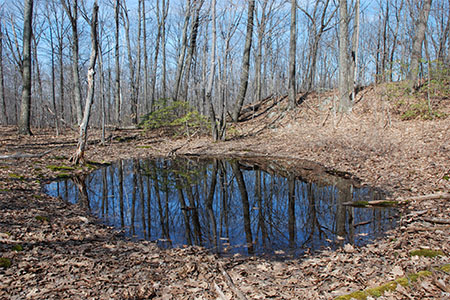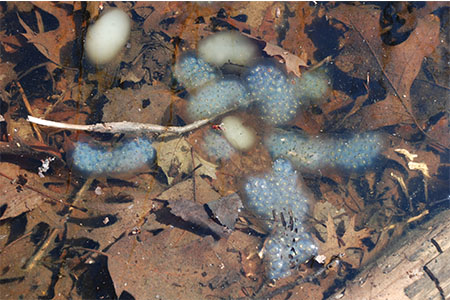Vernal Pools
They’re called “vernal pools” because they fill with water in the spring and typically dry up during the summer. They are bodies of water with no inlet or outlet and depend on the surrounding watershed to provide clean water for breeding and larval development of salamanders, Wood Frogs, and delicate fairy shrimp – a critical food source. Survival of amphibian larvae is a race against time since hatchlings must leave within weeks for the upland forest, as pools often dry up by early summer.
Wood Frog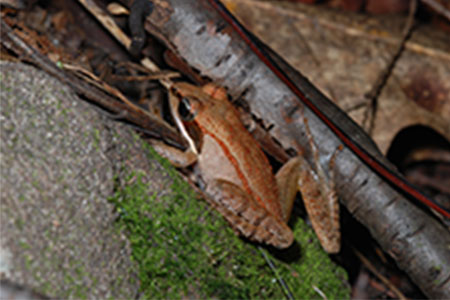
Wood Frogs are terrestrial except during the early spring when they migrate to vernal pools, forming breeding congregations.
Wood Frog egg mass with hatching tadpoles.
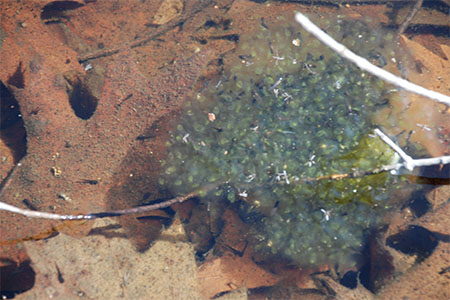
Spotted Salamander
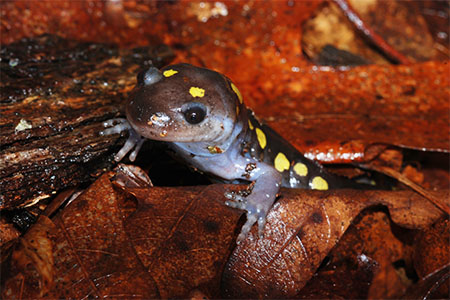
Spotted Salamander coming out of its winter retreat at the pond opposite the Log Cabin. This individual is about to migrate to the pond where it will join hundreds of other individuals in the annual spring breeding congregation. Then, on another rainy night, it will migrate back to the surrounding forest where it will spend the summer and winter in burrows beneath the leaf litter.”
Spotted Salamander egg masses in a vernal pool on East Mountain. Each mass is surrounded by a layer of jelly, which can be either clear or opaque and white. The eggs are laid in the early spring and hatch into gilled, aquatic larvae, which must transform into terrestrial juveniles before the pond dries up.
Jefferson’s-Blue Spotted Salamander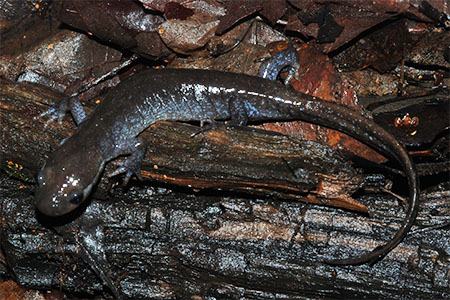
A female salamander of the Jefferson’s-Blue Spotted Salamander complex migrates to the pond across from the Log Cabin. This the animal is probably a hybrid with three sets of chromosomes, two from a Jefferson’s Salamander and one from a Blue-spotted Salamander male. Jefferson/Blue-spotted hybrids are nearly always females that reproduce asexually.
Marbled Salamander
Marbled Salamander, photographed during the autumn breeding migration at a pond near the Notch on the Holyoke Range. The pond was dry at the time but flooded later in the fall, allowing the Marbled Salamander eggs to hatch.
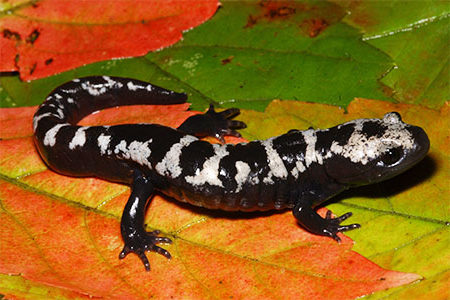
Pictures and text courtesy of a friend of the Mt. Tom Range.

